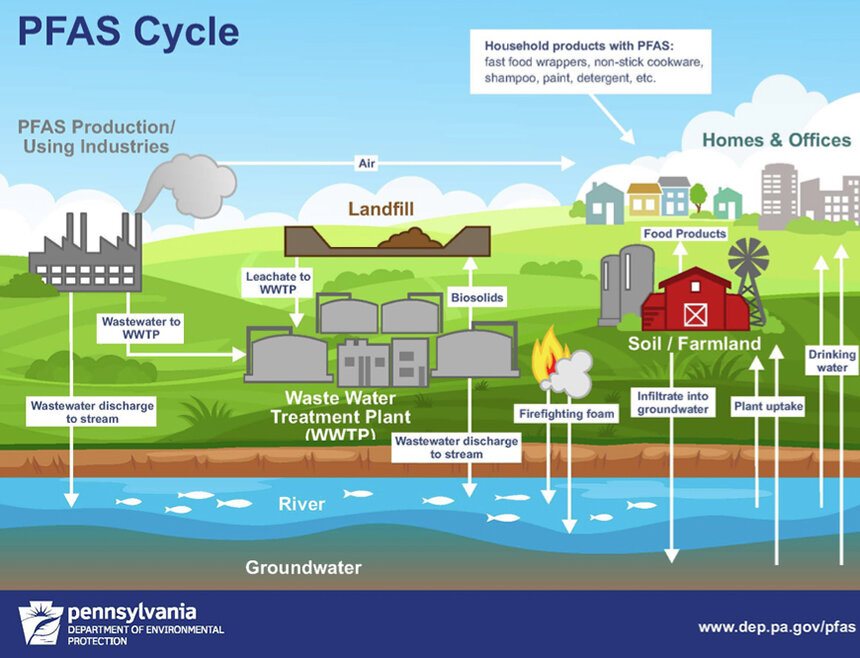Black, Sticky, Oily Stuff a Neighborhood Nuisance
September 13, 2013
COVENTRY, R.I. — The source of the black, sticky, oily substance that has coated two neighborhoods since 2011 appears to have been identified. A 240-page report released by SAGE Environmental blames the gunk on secretions by an insect called the black-banded lecanium scale. This quarter-inch bug feeds on tree sap, leaving behind a sticky substance suitable for growing sooty mold.
In residential areas, the mold appears as a light film on homes, decks, fences and outdoor furniture. The SAGE report looks at previous studies by the state Department of Environmental Management (DEM) and the University of Rhode Island, which have reached similar conclusions.
URI research associate Heather Faubert said oak trees have been the preferred habitat for the scale-bug infestations. Their “honeydew” secretions typically coat items sitting under oaks and other trees.
The mold phenomenon is simply part of a natural increase in scale-bugs, she said. “For unknown reason, the population just spikes sometimes.”
There are no health risks related to the mold except for people with a sensitivity to mold, according to DEM.
In 2012 and earlier this year, residents living near asphalt plants and the neighborhood group Citizens Advocating for a Safe Environment (CASE) were concerned that the source was the nearby asphalt plants on Airport Road. SAGE and the DEM, however, have concluded that the soot doesn’t contain petroleum hydrocarbons or other materials that may have come from industrial asphalt operations.
Neighbors, however, suggested that Pasteryak Asphalt and T. Miozzi Inc. are causing air pollution and producing noxious odors in around their homes and at nearby schools. Residents in the Wood Estates North and Westwood Estates neighborhood, in particular complained of noise, dust, excess truck traffic and jarring vibrations inside their homes. CASE also has expressed concern that the plants threaten drinking water supplies.
The DEM has yet to read SAGE’s report, but 41 inspections and numerous pollution monitoring visits between March 20 and Aug. 26 have yielded no violations. The most recent odor complaint was filed Sept. 9. Subsequent inspections didn’t find odors beyond the property line of the asphalt plants. As part of an ongoing response to complaints, the DEM also continues to inspect other businesses near the neighborhood.
T. Miozzi has been operating since 2006. Pasteryak, located in the same lot, has been in existence since 1977. Pasteryak was idle for 18 months before it resumed operation in July 2011. Complaints started soon after. In 2012, 150 complaints were filed, prompting the DEM to increase inspections at the two plants. Calls to both companies were not returned.
The DEM has consulted with both companies about odor reduction techniques, dust control measures and cutting down on truck idling.
Town manager Tom Hoover, who lives in the Wood Estates North neighborhood, said soot sightings have dropped off dramatically this year. DEM has reported no recent complaints from from the substance. Any further steps to address the other complaints will be handled by the state, Hoover said. “The only action taken will be done by DEM.”
Tammy Duxbury, who serves on the board of CASE and lives in Wood Estates North, said the group will continue to push DEM and the town to conduct more testing. The SAGE report, she said, identified possible petroleum based chemicals in the air testing. Water and soil testing is also warranted as the asphalt plants sit atop an aquifer. Duxbury says soil testing can also determine if previous businesses buried harmful materials at the site, posing a threat to one of the town’s drinking water sources.
Duxbury was pleased that the town council recently curtailed business hours in the industrial park. Truck traffic, however, is still a problem on Reservoir Road, especially in the morning when children are heading to the two schools on the street. “Someone’s probably going to get killed on that road and it’s probably going to be a school child,” she said.
Additional action will be difficult as some members of the town council have strong ties to businesses in the park and don’t want to see them regulated, she said. “The town has pretty much wanted to ignore everything.”
Categories
Join the Discussion
View CommentsRelated Stories
Your support keeps our reporters on the environmental beat.
Reader support is at the core of our nonprofit news model. Together, we can keep the environment in the headlines.
We use cookies to improve your experience and deliver personalized content. View Cookie Settings



